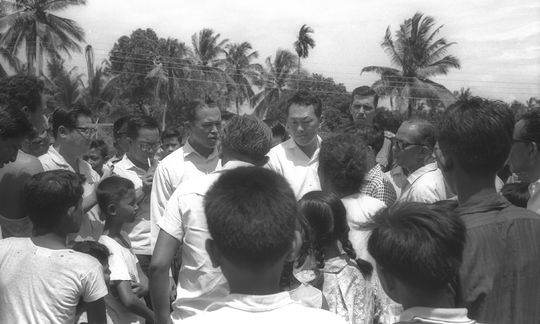Ordinary Items, Extraordinary Stories
Have an artefact or story like theirs? Contribute here.
Keep Them Coming
Check out some of the contributions that we have received so far.
INTRODUCTION
Our Nation-Building Years Told Through Artefacts
The 1950s to 1970s was a time of transformation for Singapore.
Our founding leaders envisioned a multicultural Singapore. They dreamed big, boldly turned challenges into opportunities, and exemplified integrity and service to others before self.
Our fledgling nation would not have been built if not for the contributions of Singaporeans from all walks of life who rallied behind our leaders and adapted to changes, living out the founding values themselves.
The artefacts you see in this exhibition bear witness to these founding stories. They reveal how values from more than 50 years ago continue to stand us in good stead for challenges of our generation, such as COVID-19. Look out also for the National Day songs we sing that capture the spirit fo these values.
Chapter 1
Stand Up for Singapore
Our nation-building years saw countless acts of selflessness and sacrifice. Students, housewives and labourers, among other groups, demonstrated a spirit of gotong royong (community cooperation), standing up in response to various calls to clean up the city, build roads or contribute to building funds.
This sense of community and togetherness lives on today in our battle against COVID-19. We see this – whether in individual acts of adhering to safe management measures, in essential service workers soldiering on, or in the many ground-up initiatives to support others.

Defending Singapore
As a newly independent nation, Singapore faced pressure to build up its defence fast and early generations of Singaporeans bravely stepped up to the plate.

Caring for the Community
Initiatives like the Keep Singapore Clean campaign and Gotong Royong project were just some ways people came together for their community and country.
CHAPTER 2
One People, One Nation, One Singapore
Multiculturalism has been foundational to Singapore ever since we attained self-government in 1959, and helped us navigate through times of communal tension in the lead up to independence.
Our founding leaders rallied Singaporeans to set aside differences and stand together as one united people.

Defining Our Nation
The first of our National Symbols was introduced in 1959. They remind us of the values we stand for as one Singapore and bring us together.


Fostering Racial Harmony
During the race riots in the early 1960s, Singapore relied on our founding leaders and the community to champion multiculturalism and bring people together as one.

Cultural Concerts for All
Performances were a way to introduce the different cultures in Singapore to the people and promote greater appreciation of our diversity.
Chapter 3
We're going to show the world
what Singapore can be
Our founding leaders had the vision of transforming our economy and showing the world that Singapore was open for business. The dream of industrialising Singapore was easier said than done. To achieve this, our founding leaders and the people had to be bold, innovative and open.
This set our foundation as a country and continues to shape the way we respond to change today.

Goh's Folly
What was thought to be Goh's Folly turned out to be a successful effort to grow Singapore's economy.

The Future of Shipping
The announcement of the British military withdrawal in 1967 was not only a challenge to Singapore's defence but economy too. Singapore had to pivot quickly and our shipping industry became even more important than before.

Proudly Made In Singapore
With multinationals and manufacturing companies setting up operations in Singapore, made-in-Singapore products soon became household names and became recognised for their quality.

Opening Our Doors to the World
While Singapore actively sought foreign investments, our leaders never compromised on pollution control.
Chapter 4
Tomorrow's Here Today
What would our neighbourhoods look like without our HDB flats? What would this City in a Garden be without its roadside trees?
Our founding leaders paid close attention to the details of Singapore's landscape and worked together with Singaporeans to shape much of these familiar sights that we enjoy today. Those early years of our nation's development required taking bold steps to deliver on home ownership at a scale never seen before. All of this helped realise Singapore's vision of a Garden City, bringing the cities of tomorrow to Singapore today.

Homes for the People
Independent Singapore's public housing programme was an ambitious one. Many had to adapt to new ways of living and found homes in new towns.

Turning Singapore into a City in a Garden
Safeguarding our natural environment and the greening of Singapore was always a priority, even during our early nation-building years.
Enrich Our Memorial with Your
Stories and Artefacts











